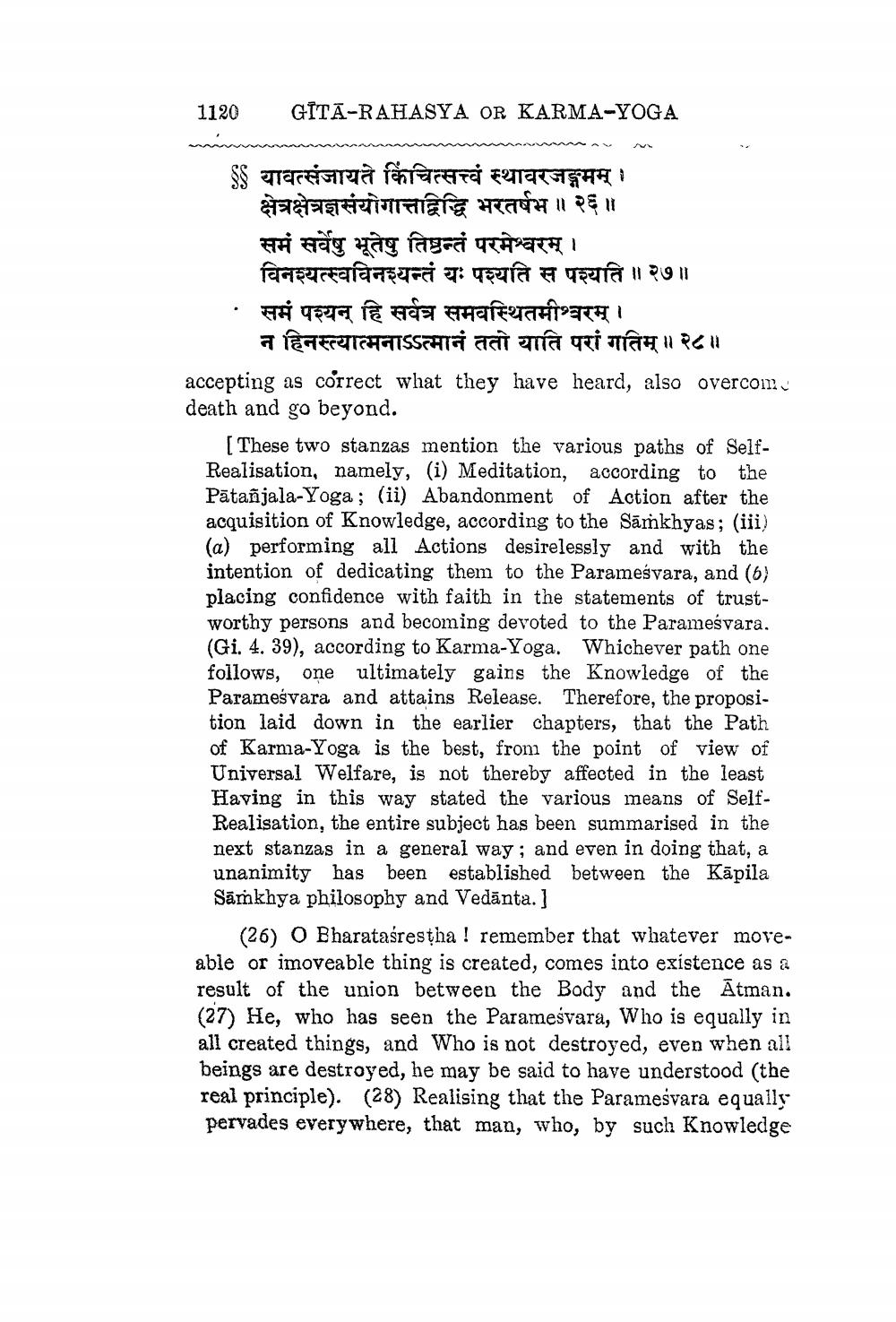________________
1120
GITĀ-RAHASYA OR KARMA-YOGA
SS यावत्संजायते किंचित्सत्त्वं स्थावरजङ्गमम् ।
क्षेत्रक्षेत्रज्ञसंयोगात्तद्विद्धि भरतर्षभ ॥ २६॥ समं सर्वेषु भूतेषु तिष्ठन्तं परमेश्वरम् । विनश्यत्स्वविनश्यन्तं यः पश्यति स पश्यति ॥२७॥ • समं पश्यन् हि सर्वत्र समवस्थितमीश्वरम् ।
न हिनस्त्यात्मनाऽऽत्मानं ततो याति परां गतिम् ॥२८॥ accepting as correct what they have heard, also overcom death and go beyond.
[ These two stanzas mention the various paths of SelfRealisation, namely, (i) Meditation, according to the Pātañjala-Yoga; (ii) Abandonment of Action after the acquisition of Knowledge, according to the Sāmkhyas; (iii) (a) performing all Actions desirelessly and with the intention of dedicating them to the Parameśvara, and (6) placing confidence with faith in the statements of trustworthy persons and becoming devoted to the Parameśvara, (Gi. 4. 39), according to Karma-Yoga. Whichever path one follows, one ultimately gains the Knowledge of the Parameśvara and attains Release. Therefore, the proposition laid down in the earlier chapters, that the Path of Karma-Yoga is the best, from the point of view of Universal Welfare, is not thereby affected in the least Having in this way stated the various means of SelfRealisation, the entire subject has been summarised in the next stanzas in a general way; and even in doing that, a unanimity has been established between the Kāpila Sāṁkhya philosophy and Vedānta. ]
(26) O Bharatasrestha ! remember that whatever moveable or imoveable thing is created, comes into existence as a result of the union between the Body and the Atman. (27) He, who has seen the Paramešvara, Who is equally in all created things, and Who is not destroyed, even when all beings are destroyed, he may be said to have understood (the real principle). (28) Realising that the Paramešvara equally pervades everywhere, that man, who, by such Knowledge




